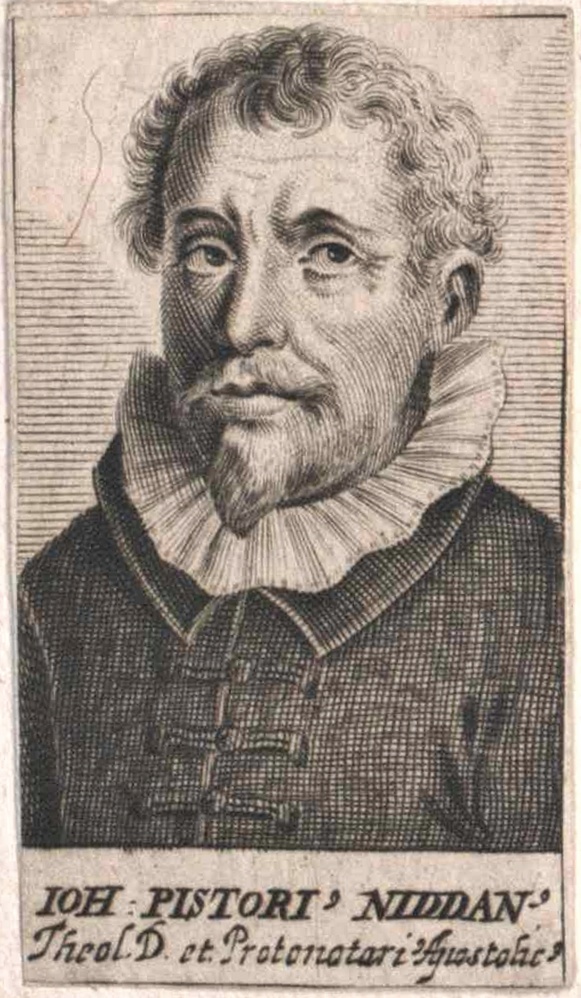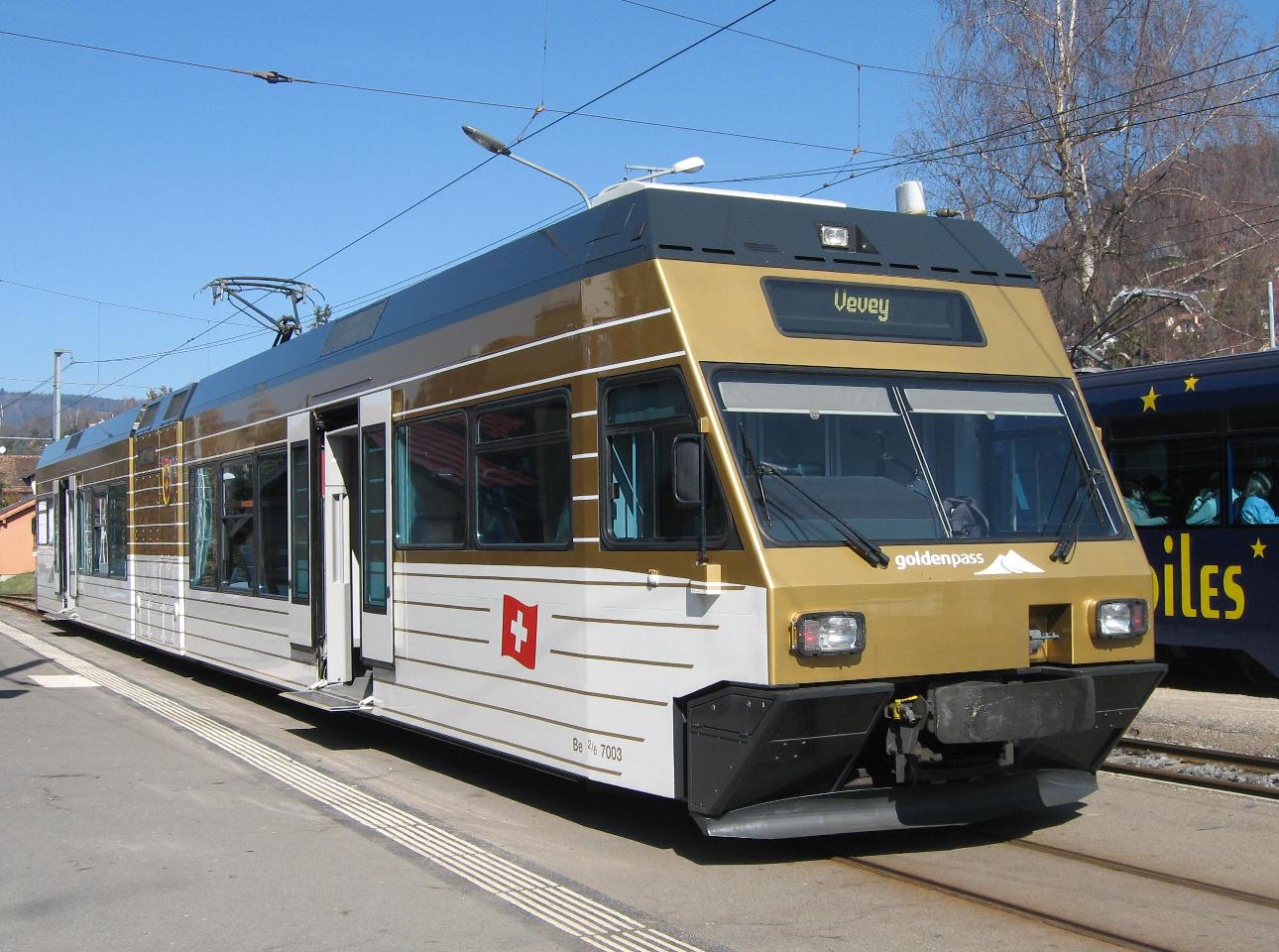|
Nidda Station
Nidda station is a station on the Gießen–Gelnhausen railway in the town of Nidda in the German state of Hesse. It is also at the end of the Beienheim–Schotten railway from Friedberg station. The station is classified by Deutsche Bahn (DB) as a category 4 station. History The station was opened on 29 June 1870 with the opening of the end of the second section of the Gießen–Gelnhausen railway (Hungen–Nidda) by the Upper Hessian Railway Company (german: Oberhessische Eisenbahn-Gesellschaft). At the end of November 1870, the line was extended to Gelnhausen. On 1 October 1897, the Beienheim–Schotten railway was opened from Beienheim via Nidda to Schotten. This made Nidda a major railway junction of the Wetterau. On 29 November 1959, passenger services on the Nidda–Schotten section were abandoned. Freight still operated until February 1960, when it was closed due to lack of demand. Its track was dismantled a few months afterwards. The station (except the “house” p ... [...More Info...] [...Related Items...] OR: [Wikipedia] [Google] [Baidu] |
Nidda, Hesse
Nidda is a town in the district Wetterau, in Hesse, Germany. It is situated on the Nidda river, approximately northeast of Frankfurt am Main. Division of the town The municipality consists of the districts Unter-Widdersheim, Ober-Widdersheim, Borsdorf, Harb, Bad-Salzhausen, Geiß-Nidda, Ulfa, Stornfels, Eichelsdorf, Ober-Schmitten, Unter-Schmitten, Kohden, Nidda, Michelnau, Fauerbach, Wallernhausen, Schwickartshausen, Unter-Lais and Ober-Lais. History Invited through a manifesto issued by Catherine the Great, several families from this region travelled to Russia in the late 18th century to settle in the Volga Region near Saratov. Family names Appel, Daubert, Pfaffenroth, Weitz and Scheuermann are examples of Volga Germans who helped to establish local villages, including Yagodnaya Polyana. Nidda has a vibrant mix of people from many backgrounds, including Turkish, Russian and Pakistani. The Ahmadiyya Muslim Jamaat opened its first purpose-built mosque in Nidda in 2011. Mayor ... [...More Info...] [...Related Items...] OR: [Wikipedia] [Google] [Baidu] |
Wetterau
The Wetterau is a fertile undulating tract, watered by the Wetter, a tributary of the Nidda River, in the western German state of Hesse, between the hilly province Oberhessen and the north-western Taunus mountains. Bettina von Arnim writes of Wetterau in her text ''Diary of a Child'' in the chapter "Journey to the Wetterau". Geography The Wetterau is located north of Frankfurt am Main, on the eastern side of the Taunus and south-west of the Vogelsberg. The main part of the region is taken up by the political region Wetteraukreis. The region got its name form the small creek Wetter, but the region is crossed by several other creeks and rivers--for example, the Nidda, Nidder, Horloff and Usa. History The Wetterau has a long history and is one of the oldest cultural landscapes in Germany. It was always a very fertile region and was populous from as early as the Neolithic Age. Artifacts from successive civilizations that populated the area also exist. Prominent discoveries ar ... [...More Info...] [...Related Items...] OR: [Wikipedia] [Google] [Baidu] |
Railway Stations In Hesse
Rail transport (also known as train transport) is a means of transport that transfers passengers and goods on wheeled vehicles running on rails, which are incorporated in tracks. In contrast to road transport, where the vehicles run on a prepared flat surface, rail vehicles (rolling stock) are directionally guided by the tracks on which they run. Tracks usually consist of steel rails, installed on sleepers (ties) set in ballast, on which the rolling stock, usually fitted with metal wheels, moves. Other variations are also possible, such as "slab track", in which the rails are fastened to a concrete foundation resting on a prepared subsurface. Rolling stock in a rail transport system generally encounters lower frictional resistance than rubber-tyred road vehicles, so passenger and freight cars (carriages and wagons) can be coupled into longer trains. The operation is carried out by a railway company, providing transport between train stations or freight customer facilit ... [...More Info...] [...Related Items...] OR: [Wikipedia] [Google] [Baidu] |
Silberling
Silberling is the colloquial name for the n-coaches of the Deutsche Bundesbahn, a type of regional Passenger car (rail), passenger coach of which more than 5,000 units were built from 1958 to 1981. Nearly all of the coaches have undergone extensive modernisation – these modernised units are widely known as ''Mintling'', ''Grünling'' ("greenling") or ''Rotling'' ("redling") after their exterior colours. The term ''Buntling'' ("colourfulling") is used to denote refurbished Silberling coaches in general. Origin of the name The term ''Silberling'' derives from the coaches' stainless steel body which gave them a unique look during their term of service. Translated it means "silverling" in the English language. Historically, Silberling is a silver coin and widely known from the bible: the thirty pieces of silver (in the Bible translations into German, German Bible: "30 Silberlinge", Gospel of Matthew, Matthew 26,14) Judas Iscariot, Judas obtained for his treason. Technical data ... [...More Info...] [...Related Items...] OR: [Wikipedia] [Google] [Baidu] |
DB Class 218
The DB Class 218 (before 1968 the DB Class V 164) are a class of 4-axle, diesel-hydraulic locomotives acquired by the Deutsche Bundesbahn for use on main and secondary lines for both passenger and freight trains. The class represents the final major revision of the DB V 160 family of locomotives; having the preferred features of the antecedent locomotives, including a hydrodynamic brake, and a single engine providing electrical train heating via a generator as well as tractive power. The class were also the most numerous of the family, providing the backbone of the Deutsche Bundesbahn's main-line diesel locomotive traction from the 1970s up to the reunification of Germany. Despite being displaced from many workings by DMUs, electrification, and inherited DR Class 130s, as of 2009 a significant number of the class still remain active throughout Germany. Background, history and design The locomotives of series 218 were the last of the V 160 family to be developed; the main new ... [...More Info...] [...Related Items...] OR: [Wikipedia] [Google] [Baidu] |
Stadt-Express
The ''Stadt-Express'' ''(SE)'', formerly '' City-Bahn (CB)'', is a train category in Germany, that links conurbations with the outer reaches of the surrounding countryside. The name literally means "City Express". Deutsche Bahn no longer offers Stadt-Express services, but the Rhein-Main-Verkehrsverbund tariff association still ordered them until December 2016. As a consequence, there were Stadt-Express lines in the RMV-area, but they were categorized by the Deutsche Bahn as either Regionalbahn or Regional-Express. Stadt-Express lines were renamed to Regionalbahn or Regional-Express or were discontinued. The last remaining one is running from Leipzig to Saalfeld/Saale operated by Abellio Rail Mitteldeutschland. Concept The ''Stadt-Express'' has the role of linking cities to those areas outside their immediate surroundings; it therefore stops at every station in the outlying region. However, in the 'core' area of the conurbation, served by other local passenger trains like the ... [...More Info...] [...Related Items...] OR: [Wikipedia] [Google] [Baidu] |
Frankfurt Hauptbahnhof
Frankfurt (Main) Hauptbahnhof, also called Frankfurt Central Station and Frankfurt Main Station, is the busiest railway station in the German state of Hesse. Because of its location near the middle of Germany and usage as a transport hub for long and short distance travelling, Deutsche Bahn refers to it as the most important station in Germany. Name The affix "Main" comes from the city's full name, ''Frankfurt am Main'' ("Frankfurt on the River Main") and is needed to distinguish it from Frankfurt (Oder) station on the River Oder in Brandenburg. In German, the name is often abbreviated as Frankfurt (Main) Hbf. History 19th century In the late 19th century, three stations connected Frankfurt to the west, north and south, the *''Taunus station'' for the Taunusbahn (opened 1839), connecting Frankfurt to Wiesbaden *''Main-Neckar-station'' for the Main-Neckar Railway to Darmstadt, Heidelberg and Mannheim (1848)) *''Main-Weser station'' for the Main–Weser Railway to Kasse ... [...More Info...] [...Related Items...] OR: [Wikipedia] [Google] [Baidu] |
Reichelsheim (Wetterau)
Reichelsheim is a town in the district Wetteraukreis, in Hesse, Germany. It is located 30 kilometers north of Frankfurt am Main. Division of the town Reichelsheim consists of the 6 districts: * Beienheim (population 1,570) * Blofeld (population 476) * Dorn-Assenheim (population 1,228) * Heuchelheim (population 444) * Reichelsheim (population 1,946) * Weckesheim (population 1,077) The total population is 6,741 (population as of 2003). History The oldest parts are Beienheim (first mentioned in a document from the year 773) and Reichelsheim (817). The town of Reichelsheim was created in 1972 during an extensive land reform. The formerly independent villages mentioned above joined administrative structures now concentrated in the largest of the villages, Reichelsheim. The area which is now the town of Reichelsheim was probably already populated in Celtic times. During the fourth century BC the Celts were slowly displaced by Germanic tribes that later had to yield to Roman rule ... [...More Info...] [...Related Items...] OR: [Wikipedia] [Google] [Baidu] |
Echzell
Echzell is a municipality in the Wetteraukreis, in Hesse, Germany. It is located approximately 35 kilometers northeast of Frankfurt am Main Frankfurt, officially Frankfurt am Main (; Hessian: , "Frank ford on the Main"), is the most populous city in the German state of Hesse. Its 791,000 inhabitants as of 2022 make it the fifth-most populous city in Germany. Located on its na .... References Wetteraukreis {{Hesse-geo-stub ... [...More Info...] [...Related Items...] OR: [Wikipedia] [Google] [Baidu] |
Stadler GTW
The Stadler GTW is an articulated railcar for local transport made by Stadler Rail of Switzerland. GTW stands for Gelenktriebwagen (articulated railcar). History The Biel–Täuffelen–Ins-Bahn near Bern, Switzerland was looking for a lighter train model to replace its aging fleet, so that a low floor system does not require heavy installations on the roof. Based on that requirement Stadler came up with a concept of placing most of the equipment in a central unit between the seating cars. While the BTI-Bahn tracks are meter gauge, Stadler presented the first prototype in 1995 set on standard gauge rails, and the Mittelthurgau-Bahn tested three prototypes on its standard gauge network during 1996. The rolling stock for Mittelthurgau was later expanded to 10 GTW 2/6 (built 1998–1999) that are now part of the THURBO fleet (the three prototypes were sold to Italy). The next lots were produced in meter gauge, and were delivered to the BTI-Bahn and the CEV-Bahn (Chemins de fer éle ... [...More Info...] [...Related Items...] OR: [Wikipedia] [Google] [Baidu] |
Hessische Landesbahn
Hessische Landesbahn (Hessian State Railway, HLB) is a regional transport company owned by the German state of Hesse, based in Frankfurt am Main. It provides bus and rail passenger transport services and, to a lesser extent, rail freight services in Hesse and across the state’s borders through its subsidiaries and affiliates. Company The management of Hessische Landesbahn is supervised by Veit Salzmann. The districts and the State of Hesse are represented by four people on the Supervisory Board and the employees also have four seats on the Board. Structure ''Hessische Landesbahn GmbH'' operates as the holding company of three subsidiaries: *''HLB Hessenbahn GmbH'' operates rail services; *''HLB Hessenbus GmbH'' operates bus services; *''HLB Basis AG'' provides the resources for the transport operators; it is a railway infrastructure company, it owns most of the vehicles operated and it operates vehicle workshops. HLB Hessenbus and HLB Hessenbahn are 100 per cent owned subsidiary ... [...More Info...] [...Related Items...] OR: [Wikipedia] [Google] [Baidu] |




